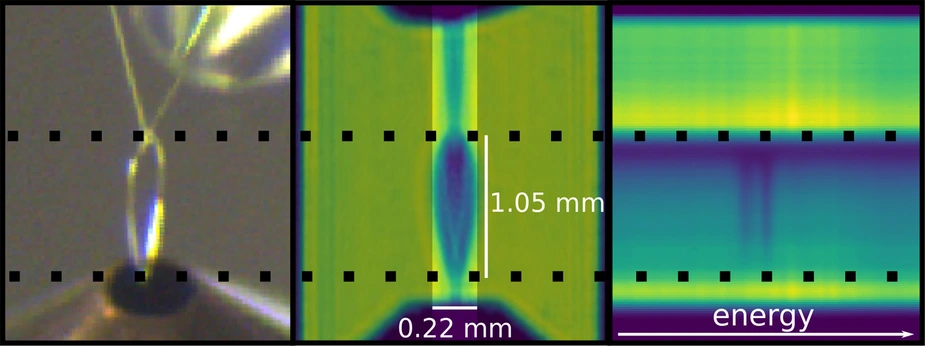Dynamic measurements in liquids now possible in the laboratory
Newly developed laboratory spectrometer works with a plasma light source and provides a time resolution of 500 picoseconds

A team of researchers in Berlin has developed a laboratory spectrometer for analysing chemical processes in solution - with a time resolution of 500 ps. This is of interest not only for the study of molecular processes in biology, but also for the development of new catalyst materials. Until now, however, this usually required synchrotron radiation, which is only available at large, modern X-ray sources such as BESSY II. The process now works on a laboratory scale using a plasma light source.
"Our laboratory setup now makes this measurement method available to a wider community," says HZB physicist Dr. Ioanna Mantouvalou, who drove the development together with partners from the Technische Universität Berlin, the Max Born Institute, the Physikalisch-Technische Bundesanstalt and the company Nano Optics Berlin. "In a first step, the laboratory measurements can also more precisely define where further analyses at synchrotron sources are useful and promising. This allows us to make better use of scarce resources," says Mantouvalou.
Time-resolved soft X-ray spectroscopy provides access to the properties of organic materials and is therefore ideal for studying dynamic changes in the electronic structure of individual elements in disordered systems. However, measurements of liquid solutions in which these molecules or complexes are dissolved are particularly challenging. They require a high photon flux and extremely low noise. Therefore, these experiments require usually large-scale facilities such as modern synchrotron light sources.
In contrast, the new laboratory instrument uses light from a plasma created by the interaction of an intense laser pulse with metal. The new instrument provides a time resolution of 500 picoseconds and allows a very "stable" detection. "We were able to demonstrate this in our study using two examples in an aqueous solution. We analysed the metal complex compounds [Ni(CN)4]2- and [Fe(bpy)3]2+," says Richard Gnewkow, first author and PhD student in Mantouvalou's team.
Publication:
Optica (2024): Laboratory soft X-ray setup for transient absorption experiments in the liquid phase using a laser-produced plasma source
Richard Gnewkow, Holger Stiel, Adrian Jonas, Silvana Schönfelder, Jürgen Probst, Thomas Krist, Birgit Kanngiesser, Ioanna Mantouvalou
DOI: 10.1364/OPTICA.517698
Contact:
Helmholtz-Zentrum Berlin für Materialien und Energie
Research Group SyncLab - Combined X-Ray Methods at BLiX and BESSY II
Richard Gnewkow
+49 30 8062-15067
richard.gnewkow(at)helmholtz-berlin.de
Dr. Ioanna Mantouvalou
ioanna.mantouvalou(at)helmholtz-berlin.de
Press release HZB, 23 May 2024